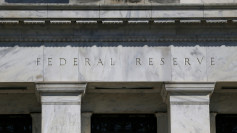China's economy's motors are sputtering, with exports declining, factory output decreasing, record-low investment rising, and demand coming off the boil.
Industrial output grew 4.5 percent from a year earlier, compared to an average forecast of 5.4 percent, data showed Thursday. Retail sales decreased 7.1 percent, compared to a predicted 7.7 percent increase.
Fixed-asset spending declined to 5.1 percent in the first 10 months. Back to 1998, this was the lowest reading in comparable data.
The soft data demonstrated the need for a phase-one trade agreement with the US to put a floor under the trust of companies.
Although the economy has lost steam, government and central bank have refrained from withdrawing economic stimulus, opting to make smaller changes to try to boost demand without massive debt expansion.
"The momentum for slowdown is not over yet," said HSBC Holdings Plc economist Julia Wang. "Because the recession is so fast, it may have an effect on the labor market at some stage next year."
After the tests, most Asian stock markets dropped to session lows. Yet the yuan is still slightly stronger for the day and much of this week's profit has been lost by government bonds.
Chinese Ministry of Commerce spokesman Gao Feng said on Thursday the removal of existing tariffs is an important condition for any deal and that China is willing to address core concerns with the U.S. to create conditions for a phase-one deal.
Last week, Chinese officials and some U.S. officials say they planned to roll back some tariffs if a phase-one agreement occurs. But the optimism was dampened quickly as US President Donald Trump said he did not agree to anything.
The trade war has been going on for over a year, hurting the global economy. Any re-escalation would further impact the mood of the buyer.
The data are further evidence that the efforts of policymakers to curb the economy's slowdown are falling behind the curve as the nation faces structural downward forces at home and the uncertainty clouding the US trade outlook.
The expenditure data shows how conservative private firms have become, investing at the lowest level since 2016 in the first 10 months of the year. The sustained stabilization of state-owned firms' investment avoids an even sharper fall in headline results.
Investment in the property market is a bright spot, with investment reported in September by the manufacturing sector slightly above the low level. Growth in investment in infrastructure has continued to bounce around 4 percent as it has throughout the year.
While the challenges facing the economy should not be overlooked, the overall momentum has not shifted, according to Liu Aihua, spokeswoman for the National Bureau of Statistics, who spoke in Beijing after the publication of the information.






